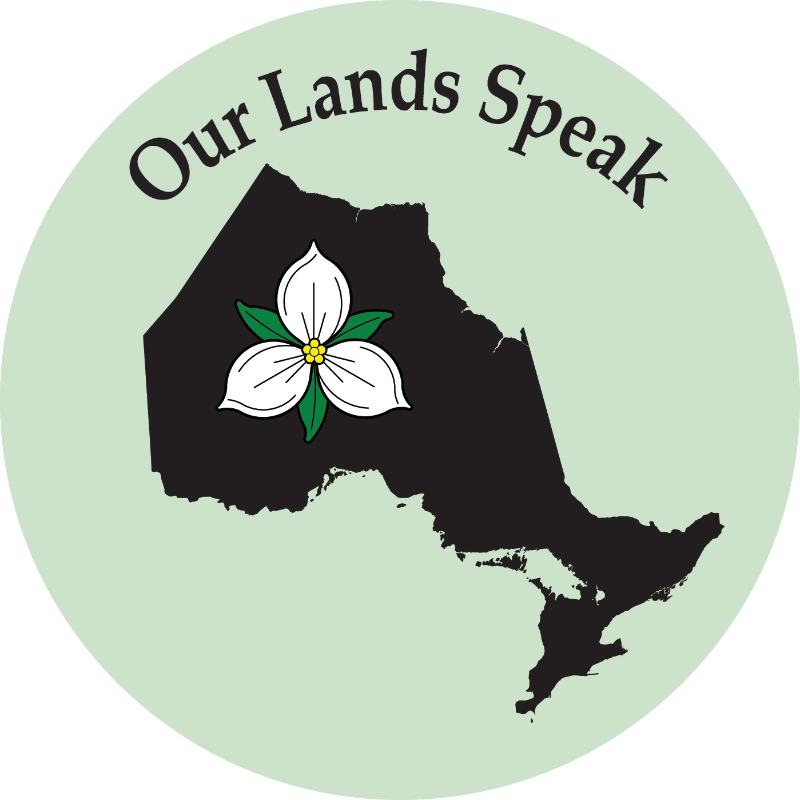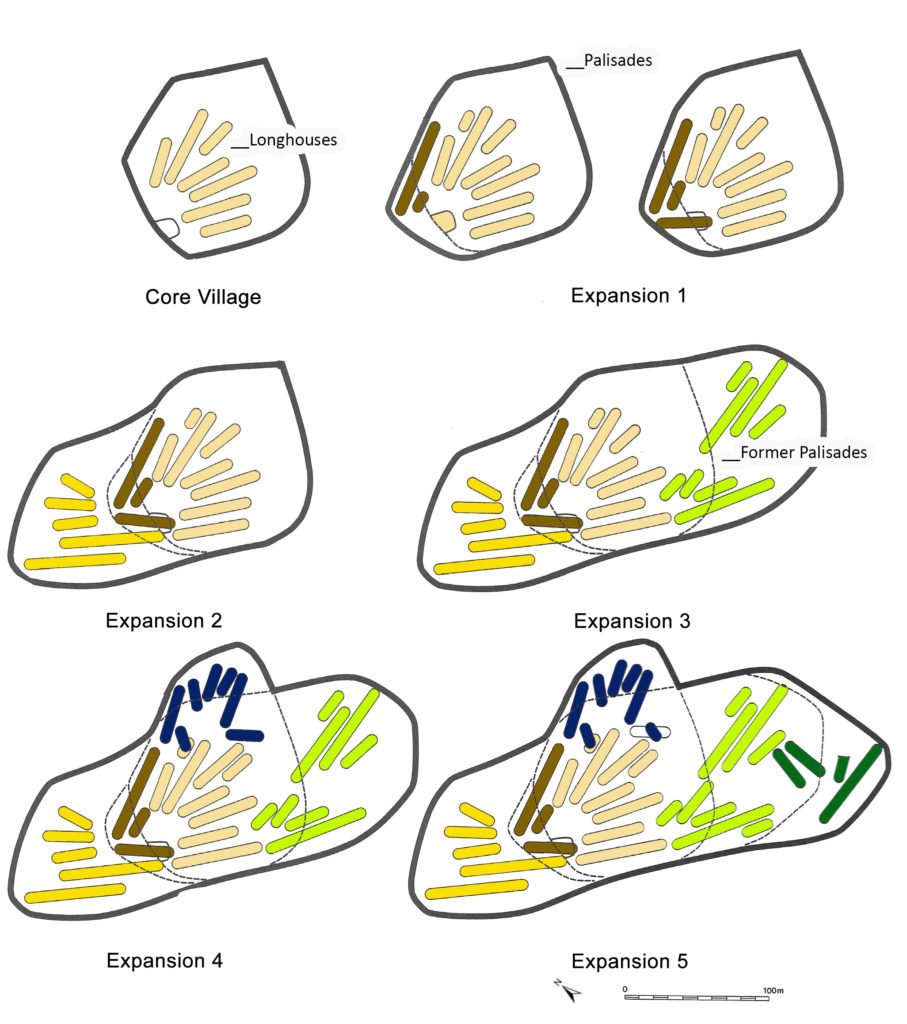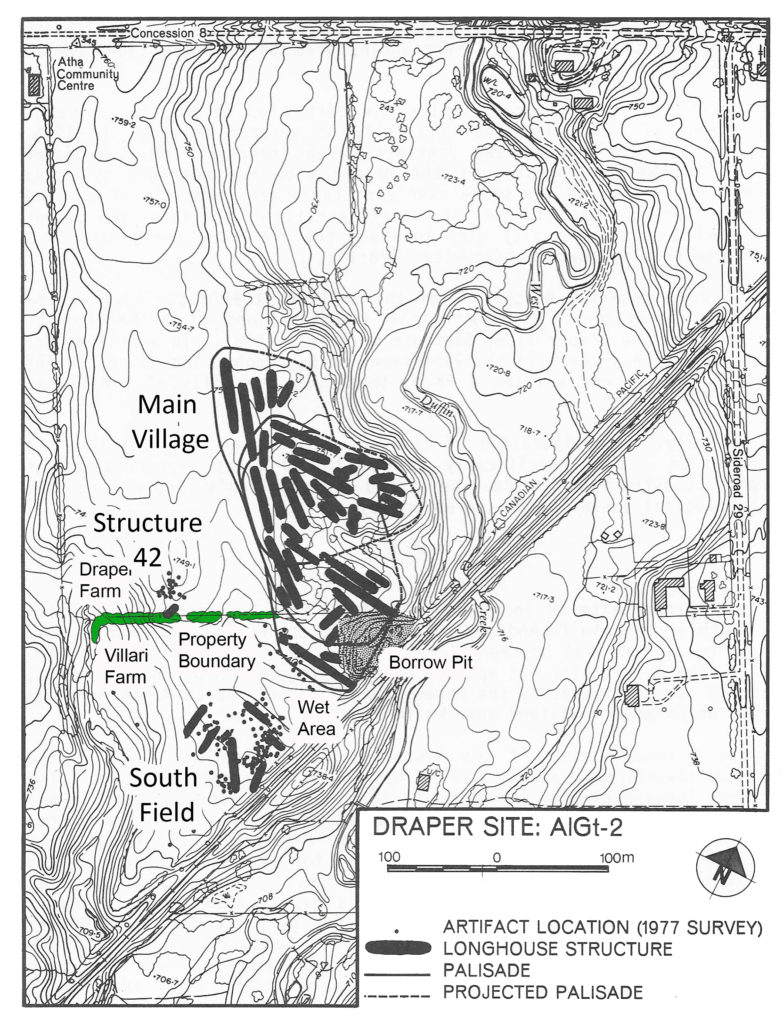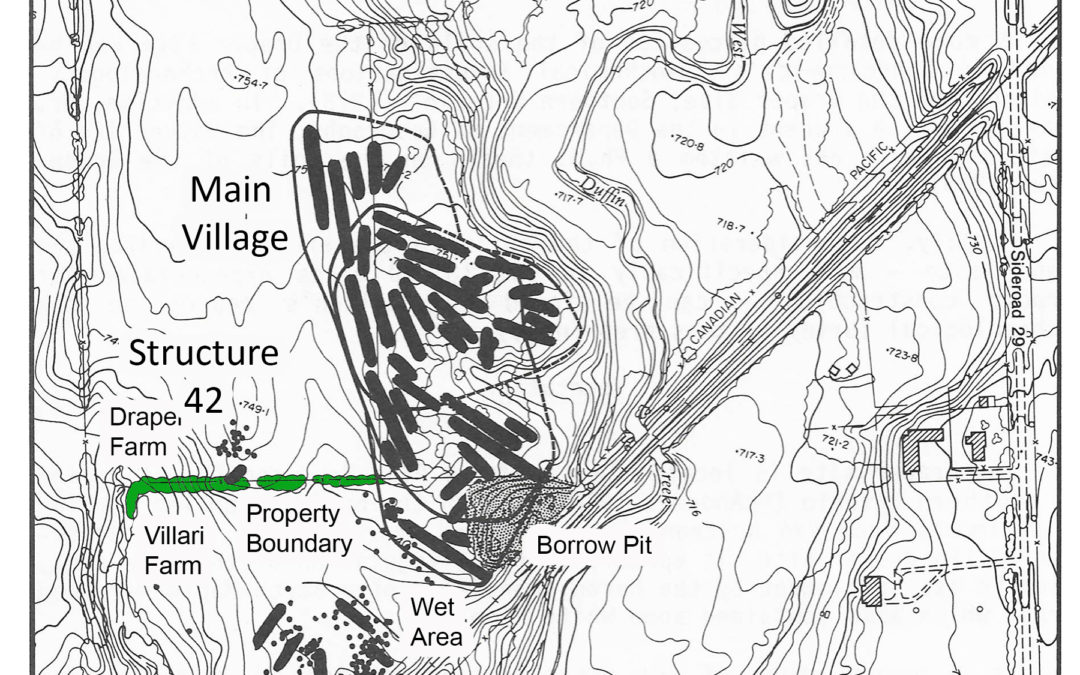
Our 1975 and 1978 excavations at the Draper Site revealed many fascinating aspects about this Iroquoian village which has traditionally been dated to about 1450-1500 A.D. Forty years after completion of our work, Draper remains one of the most significant excavations of an Iroquoian village in Ontario and perhaps Northeastern North America.
One of the most intriguing aspects of the site is that it began as a typical small community of about 8 longhouses in a palisaded village, 1.2 hectares in size. Amazingly, it expanded five times to become a 3.4-hectare village comprised of 39 houses, most of which were occupied at the same time, with an estimated population of 1,800 people. We refer to this as the Draper site Main Village. In addition, we discovered a cluster of seven longhouses located 50 m south of the Main Village which we refer to as the South Field, and a single short longhouse 80 m southwest of the Main Village which we refer to as Structure 42.
Determining when the different segments were added to the Draper village was a major challenge for us. In 1985, I published a 600-page book in which I addressed this and other questions about the site. At that time, I proposed that the village grew in a fashion illustrated in this figure and as follows:

- The core village had an estimated population of 396 people
- Expansion 1 involved the addition of two, and then a third house, increasing the population by 108 people to 504 people.
- Expansion 2 involved the addition of five more houses with an estimated population of 324 people, bringing the total population to 828 individuals.
- Expansion 3 added eight more houses with an estimated population of 408 people, bringing the total estimated population to 1,236 people.
- Expansion 4 added five houses and 216 individuals, resulting in a population of 1,452 people.
- Expansion 5 added at least four houses, but I believe there were two more destroyed by the railroad construction in the 19th century. Further to this, a number of houses were extended during their occupation. This resulted in a total estimated population of more than 1,800 individuals.

There are other aspects of the expansion of the village which I will explore in future blogs. However, in case you missed it or are new to my blog, be sure to refer to the series I’ve written here so far about Draper including Early Excavations Part 1 and Part 2, Digging for Houses and Palisades Part 1 and Part 2, and Digging Middens (Garbage Dumps).
For more information about Ontario archaeology including our other work and book series on Patterson Village and Queensville, you can click on either name. The third in the series will be released in the fall. Stay tuned.
I will be available throughout the summer and fall seasons for book readings and presentations, ideal for your local library, special interest, and historical societies. Feel free to email me directly to inquire and/or arrange.
Sincerely,
Bill Finlayson
William D. Finlayson, Midland, Ontario
Ontario’s Leading and Senior-Most Archaeologist and Author
Feature image of blog post: Plan of Draper site
All rights reserved. The use of any part of this publication reproduced, transmitted in any form or by any means, electronic, mechanical, photocopying, recording, or otherwise, or stored in a retrieval system, without the prior written consent of the author and publisher is an infringement of the copyright law. To that end, every attempt has been made to give proper acknowledgement, and access appropriate permissions for quotes. Any oversights are purely unintentional. In the unlikely event something has been missed, please accept our regret and apology, and contact us immediately so we can investigate and rectify as needed. All of the quantitative factual information is recorded in various published and unpublished sources and can be provided upon request.
